- Home
- Patrick Robinson
H.M.S. Unseen Page 15
H.M.S. Unseen Read online
Page 15
The interesting part of this discussion was not that Bob Trueman had shed the light of a prophet upon the subject. Bob was not renowned as a major intellect, even in the higher reaches of the ARCO boardroom. He was just a professional oil man, with a voracious appetite for knowledge. His staff referred to him as the Bear, his office was referred to as the Cave. He carried three briefcases usually, and read, according to Steve Dimauro, “about 3,000 magazines a day.”
He was a likable character who tended to drive his colleagues crazy because he believed there was no group of people on his staff who could provide him with as much information as he needed. His intake of both knowledge and calories, on any given day, approached the high frontiers of supply-side economics.
Above all, however, he was quick to recognize a fool. And he definitely recognized one in a position of power. Bob Trueman had been voluble in his condemnation of the White House in the dying years of the twentieth century. And he worked for America’s current Republican President with all the energy of a true zealot. The cool rejection of his proposals in Baku, by the new men in charge of world oil—or at least a significant piece of it—had frustrated him almost beyond tolerance.
“And it was all so goddamned simple,” he growled. “All we had to do was cozy up to Iran, mend a few bridges, offer them some assistance. Then finance a U.S.-Iranian pipeline with a big fat ARCO refinery, right at the end, bang on the Gulf. That way everyone gets rich, the world keeps turning, and Iran loses its fanatical desires to close it all down. Goddammit.”
The final word was the key to his abilities. Bob did not come up with solutions. He was not a creative thinker. He was an oil-industry computer with a giant database of knowledge, honed after a lifetime in the world’s oil fields. He was a man who ought to be listened to, but, for two reasons, he was never going to be president of ARCO; one, because he might not find the decisiveness to move forward in a crisis. Two, because he did not look like a natural candidate for long life.
0950. January 17, 2006.
Bob Trueman and his colleagues were ensconced happily in the big Concorde lounge in Heathrow’s Terminal Four. All six men were sipping coffee, and the team leader had helped himself to a couple of Danish pastries. Steve had made an unusual request, that they would like lunch two hours into the three-hour flight. However, shortly after takeoff he asked if the chief U.S. oil negotiator might have a couple of cheeseburgers. Steve thought he might have to delve into the mysteries of his boss’s weight-maintenance program, but Julie, the Concorde flight attendant had smiled sweetly, and replied, “Of course, sir, I am quite certain we can manage that.”
Meanwhile, Captain Brian Lambert, in company with his Senior Flight Engineer Henry Pryor, and First Officer Joe Brody, was already in the cockpit, running through the long prestart checklist that accompanies the still-superb achievement of flying a 200-foot-long delta-winged aircraft at a speed of MACH-2, twice the speed of sound, right out on the edge of space, with 100 people on board being variously served filet mignon, roast grouse, or salmon.
Henry had already walked around the aircraft for almost an hour, making his standard visual external check. And now he sat in his seat in the cockpit, running through all the preflight tests and checks, in strict accordance with the minutely ordered written procedures. No details were skimped. No detail was so small it could be ignored. Before takeoff, Henry operated by the well-tried book.
The two pilots had studied the flight plan and the en-route chart, and, with fifty minutes to go, the flight engineer handed over his documents to the captain, who signed the log and formally accepted control of the aircraft. Now both pilots had a copy of the flight log clipped to the front of their boards. They were concerned at this moment with way points, altitudes, and radio frequencies.
Flying the Concorde is like flying no other aircraft. Everyone is always busy, such is the terrific speed and height. The supersonic empress of the North Atlantic is a demanding mistress, and the degree of care needed to bring her safely home requires the leading edge of crew diligence and perception. Her altitude is governed by barometric pressure, rather than actual feet above the ocean, and as she burns fuel at a terrific rate, becoming lighter in weight, she rises and then corrects, maybe through 500 feet over a couple of minutes.
Right now Captain Lambert was feeding the way points into the computerized inertial navigation system. These were the milestones they would call out to air traffic control all the way over the Atlantic, every 10 degrees of longitude, a distance of 450 miles. They would check in with Shannon/Prestwick (SHANWICK) oceanic control about 30 minutes after takeoff, then make another call at 4 degrees west, at the acceleration point above the Bristol Channel. That would confirm Concorde’s route, which is not the same as the other big commercial jets heading west across the Atlantic.
Concorde flies alone for several reasons, the first being that all populations in all countries must be protected from her big sonic double boom as she races through the sound barrier. Thus her course takes her straight down the middle of the Bristol Channel toward southern Ireland, where she begins to wind up her speed to supersonic. Then she streaks southwest, climbing to her cruising altitude of approximately 54,000 feet, more than 4 miles above the other jet aircraft, throwing her boom out behind her across the ocean.
Out over the Atlantic she leaves the coastline of County Cork 45 miles to starboard, sticking to a course way south of the other airliners. Concorde flies over no land between Somerset in the west of England, and the immediate precincts of John F. Kennedy Airport, Long Island, east of New York City. The 3,500-mile journey will be accomplished in three hours. At supersonic cruise speed she makes 1,330 mph, covering a mile every 2.7 seconds, 22 miles every minute. She drops a little time climbing out over southern England, where her speed is strictly restricted to just less than MACH-1, but still more like a guided missile than an airliner.
Flying her today was forty-four-year-old Brian Lambert’s second choice. His first would have been to watch his son Billy play rugby, in the front row of the scrum for his prep school first fifteen. They were up against the tigerish lineup of Elstree School in Berkshire, who traditionally won the game by about twenty points, but were perceived as vulnerable in the new season of 2006. Still, his wife Jane would be going, and Brian would be thinking of them both at 1430, when Billy would lead the team out for the first time. Concorde’s pilot would be in New York by then.
For January, it was a good day for rugby. Cloudy, not too cold, with a softish pitch thanks to three days of almost nonstop rain. Driving from Surrey to Heathrow, on still-wet roads, Brian had already noted the westerly wind and layered banks of cloud, assembling in his mind the kind of weather he would encounter as he flew the takeoff. He wondered which particular aircraft it would be today. Not, he hoped, the one that had developed a shaky gauge in number three fuel tank last week.
Now, with forty-five minutes still to go before the new 1045 departure time, he was familiarizing himself with his two-man crew. Henry Pryor he knew. They’d flown together in December, but Joe Brody, the first officer from West London, was a mere acquaintance. It was standard British Airways procedure to select random crews, mainly to avoid the obvious problems of overconfidence, slackness, and bad habits, which occasionally evolved among men who work together all the time.
Thus the three men assembled, as a flight crew, for the first time a couple of hours before departure, in the operations office, where they went over the flight plan and studied the detailed weather information provided in a folder by the airport meteorological office. Every possible contingency was contained there…temperatures, pressure systems, winds, potential areas of turbulence, possible icing areas, all laid out in a coded format, incomprehensible to a layman.
In the cockpit, preparing to leave, the planning schedules focused the minds of each of the three men. The fuel tonnage, which ensured they would have sufficient to land in the event of an engine failure, was critical. Because Concorde cannot fly at MACH-2 o
n only three of her Rolls Royce engines, neither can she remain at her great height. And when she slides down to a lower altitude, her fuel efficiency is cut by around 25 percent, which could force her to land in the Azores, or Gander in Newfoundland, or Halifax, Nova Scotia. Henry Pryor was watching the steady filling of those 95-ton capacity tanks with a beady eye.
The trim of the aircraft was also a vital part of the preparation, because the center of gravity must be spot-right. With Concorde carrying a grand total of 185 tons in weight, it is more complicated than on any other aircraft, because of the constant transferring of fuel from tank to tank in flight, and the subsequent redistribution of the tonnage. Most of the passengers are sitting in front of the gravity center. Indeed the pilot works 38 feet in front of the nosewheel, and 97 feet in front of the mainwheels. The loading officers, working with the crews, often make keen judgment calls. But they miss nothing, and the 384-pound bulk of Bob Trueman had been taken into account, along with everything else.
They called the flight shortly after 1015, and the passengers were all on board by the time the fueling was complete at 1028. The computerized loadsheet showing the final weight and balance of the aircraft was checked carefully by Brian Lambert, who signed it. The ramp coordinator reported formally to the cockpit, then left, securing Concorde’s door behind him.
The captain and First Officer Brody then set the white markers to the takeoff speed, and pitch angles of the nose cone, for the climb-out.
“Start clearance,” said Brian Lambert.
And Joe Brody contacted air traffic control, requesting permission to start the engines.
“London Ground. Speedbird Concorde 001 on stand Juliet Three for start-up.”
“Speedbird Concorde 001, clear to start. Call on 131.2 for pushback.”
Henry Pryor made two further entries on his checklist. Then he started Concorde’s number three engine.
171054JAN06. 49.76N, 32.03W.
HMS Unseen in the North Atlantic.
Periscope Depth. Course 180. Speed 5.
Linked to the commercial satellite international communication system, MARISAT, the ex–Royal Navy diesel-electric ran silently. The special submarine aerial had worked perfectly when they accessed, just before first light this morning. The message from Bandar Abbas Navy HQ had been succinct:
“KING BIRDS ON BOARD SUPERSONIC FLIGHT 001, ETD LONDON HEATHROW GATE 1045 (GMT), SCHEDULED 51N, 30W APP. 1219(GMT).”
Commander Adnam, standing in the control center with his navigator, had raised his eyebrows, and murmured, “Hmmm. An interesting first test. The highest and the fastest.”
Now, four hours later, he checked for surface ships, found none, and ordered Unseen to periscope depth in readiness to receive his next satellite communication. He also ordered the ESM mast raised and heard the hiss of the hydraulic rams as the big radar-interceptor mast slid upward. Ben checked the immediate horizon through the search periscope.
1042 (GMT) Heathrow.
Flight Engineer Pryor had all four engines running. Concorde’s nose and visor were set in the 5-degree position for the taxi to the runway, during which time 30 more checks would be undertaken by the flight crew. That morning Concorde would take off from runway 27R heading 274 degrees magnetic.
The final checks completed, Concorde taxied into her holding position, waiting her turn to leave. The cabin staff were strapped in, the flight engineer had moved his seat forward and was looking over the pilot’s shoulder, his left hand on the back of the captain’s seat. The word came over the intercom at exactly 1100.
“Speedbird Concorde 001 cleared for take-off.”
“Speedbird Concorde 001 rolling”.
Brian Lambert opened the throttles. The afterburners kicked in, increasing the acceleration.
“Airspeed building.”
“One hundred knots.”
“Power checked.”
“V1, Captain.”
This is 165 knots, the point of no return. Any faster and the aircraft could no longer stop in time to abort the takeoff. She hurtled forward, building to her ground-leaving speed of 250 knots.
“Three, two, one, noise…cut the afterburners.”
And Brian Lambert, husband of Jane, father of thirteen-year-old Billy, gunned Flight 001 westward, shrieking into the skies above London’s premier airport, climbing quicker and steeper than any of her bigger, heavier Boeing counterparts.
Concorde was watched, as always, by a breath-holding crowd of onlookers in the Terminal Four departure lounges. But she was watched also by the silent Naval attaché from the Iranian Embassy, who stood behind the glass staring west, speaking crisply into his mobile phone. “Concorde takes off 1100,” he said softly.
171104JAN06. HMS Unseen at PD. Course 028.
Speed 5.
Commander Adnam held in his hand the brief printout from the satellite message, direct from the Iranian embassy link.
FLIGHT 001 CHOCKS AWAY 1045, PROBABLE TAKEOFF 1100.
In one hour and ten minutes, he thought, Concorde would be a couple of hundred miles out. It was not a particularly clear day, visibility was only 3 miles, but his radar would take care of that, and, so far, the sonar sweep had found no noises to suggest any ships within a 12-mile radius. The seas around the submarine were clear. There was no one around: perfect conditions in which to commit the ultimate sea-air atrocity of the twenty-first century.
Ben Adnam’s team was highly trained. When he gave the word to the radar operator to begin the tracking, his men would slip into well-rehearsed routines, which they had practiced a thousand times. He felt relaxed and unemotional, as he always did when the pressure went on. And right now the Iraqi-born CO was in his rightful element, commanding a top-class submarine, with 2 miles of water beneath the keel, out here just west of the Mid-Atlantic Ridge, watching and waiting, intending, as usual, to outwit his enemies, in the most holy name of Allah.
1104 (GMT). West of Reading.
Brian Lambert had Concorde almost at 400 knots, and with the nose raised, they were climbing at about 3,000 feet a minute. Joe Brody had received clearance for 28,000 feet, and the captain had turned off the seat-belt sign. The weather up ahead looked gloomy but settled. In any event, Concorde would race 4 miles above the nearest clouds as soon as she reached her cruising altitude.
Still at MACH-.95, fractionally less than the speed of sound, the supersonic British Airways flagship thundered across western England. At 1124, high above the Bristol Channel, just before longitude 4 degrees west, her oceanic clearance came through.
“Climb when you’re ready…cruise between 50,000 and 60,000 feet on track Sierra November.”
Flight Engineer Pryor began the rearward transfer of the fuel, preparing for supersonic flight, and Brian Lambert pushed the throttles hard forward, on full power. The afterburners were fired up two at a time, as Concorde streaked through the sound barrier, smoothly accelerating to MACH-1.3.
Many passengers felt the two gentle nudges as the afterburners were ignited, and still others paused from the morning papers to listen to the sounds of the big engines changing slightly in tone. Bob Trueman wondered if he might hear the sizzle of a couple of cheeseburgers deep in the galley. He regarded sudden loss of weight much more seriously than he would ever have regarded sudden loss of altitude.
He and his team occupied a block of seven seats close to the front of the cabin—two doubles on either side of the aisle, row four; one single on the aisle, right behind in row five; another double for Bob alone, plus briefcases, on the other side, row five C and D.
Immediately in front of them was the unmistakable figure of the 1970s British pop icon Phil Charles, who was still recording at the age of fifty-five, with a reputed net worth of $300 million. The small, balding, unshaved figure sat unobtrusively with his pony-tailed manager. Both men wore T-shirts and leather jackets. The seats to their right, row three, C and D, were occupied by two sour-looking, willowy blondes in their mid-twenties, who might have been daughters, but were p
robably not.
Phil Charles’s long lifetime of philandering was a constant source of delight to London’s tabloid newspapers, mainly because he was such an unprepossessing individual with a plain and obvious vendetta against the shareholders of Gillette. He always looked dreadful to the middle-class eye.
Steve Dimauro had recognized him immediately and nodded a greeting, which was returned with a grin. In Steve’s opinion the scruffy-looking Phil might not have cut it with the willowy ones, but for that $300 million. “Sonofabitch can still sing, though,” he muttered as he took his seat on the aisle opposite the chief.
Way back in the aft section of the cabin was another pop singer, also British, the piano-playing rock star Shane Temple. He and Phil Charles wore nearly identical clothes, and they sang a lot of the same music. The difference was in the bank balance. Whereas Phil had never stopped being successful, deftly changing his style with the moment, but retaining his traditional sound, Shane had floundered in the eighties, and floundered more in the nineties, being reduced to working on the northern circuit of nightclubs, Skid Row to a pop icon.
His career had been begun again with a sensational rock-opera revival in the opening months of the new millennium. But times had been hard for a long time, and Shane was still a few hundred thousand pounds light of his next castle.
Concorde trip was a big event for him; a major recording session in New York might see him right back on top this year, and he had spent at least ten minutes cooperating with the airport press corps. Nonetheless, as they boarded the flight, his longtime manager, Ray Duffield, had groaned when he saw Phil Charles slumped in his seat reading the sports pages of the Daily Mail.

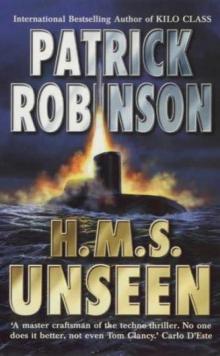 H.M.S. Unseen am-3
H.M.S. Unseen am-3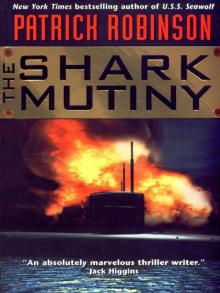 The Shark Mutiny (2001)
The Shark Mutiny (2001)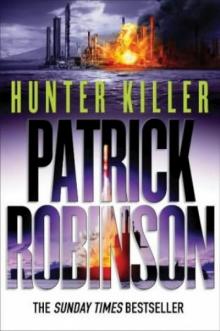 Hunter Killer am-8
Hunter Killer am-8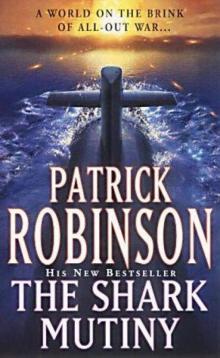 The Shark Mutiny am-5
The Shark Mutiny am-5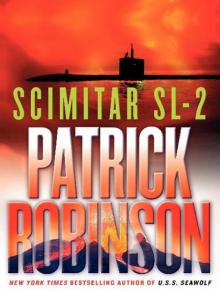 Scimitar SL-2
Scimitar SL-2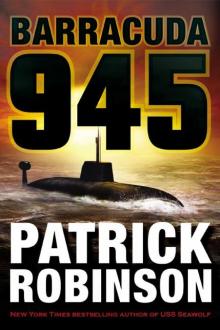 Barracuda 945 am-6
Barracuda 945 am-6 Hunter Killer
Hunter Killer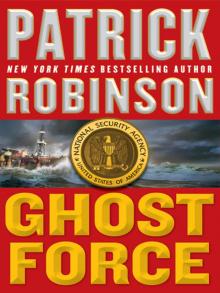 Ghost Force
Ghost Force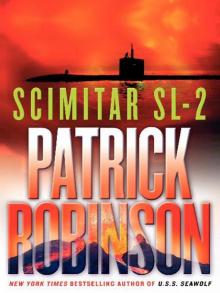 Scimitar SL-2 (2004)
Scimitar SL-2 (2004) Kilo Class am-2
Kilo Class am-2 The Lion of Sabray
The Lion of Sabray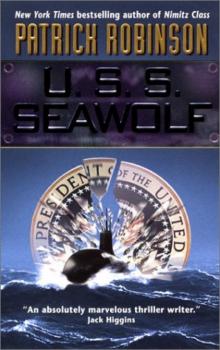 U.S.S. Seawolf am-4
U.S.S. Seawolf am-4 Ghost Force am-9
Ghost Force am-9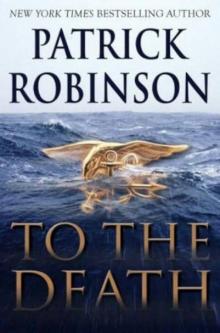 To the Death am-10
To the Death am-10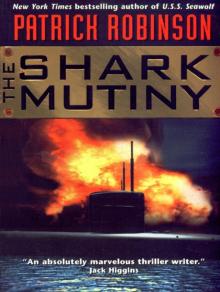 The Shark Mutiny
The Shark Mutiny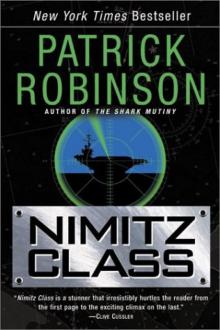 Nimitz Class am-1
Nimitz Class am-1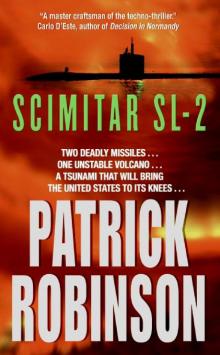 Scimitar SL-2 am-7
Scimitar SL-2 am-7 Barracuda 945
Barracuda 945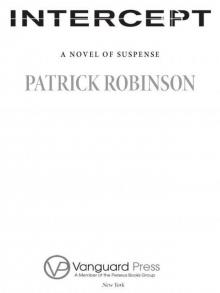 Intercept
Intercept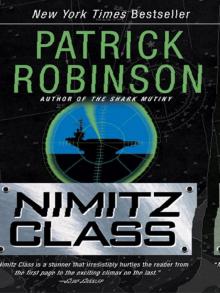 Nimitz Class (1997)
Nimitz Class (1997)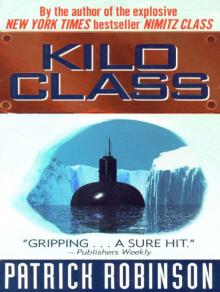 Kilo Class
Kilo Class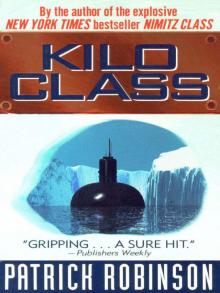 Kilo Class (1998)
Kilo Class (1998) Diamondhead
Diamondhead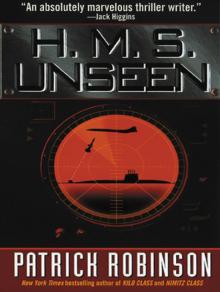 H.M.S. Unseen
H.M.S. Unseen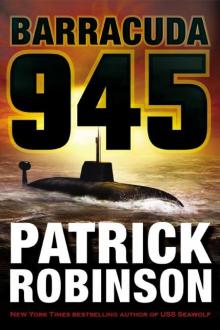 Barracuda 945 (2003)
Barracuda 945 (2003)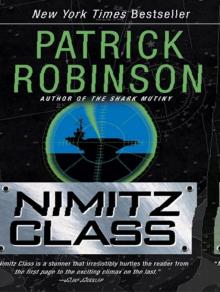 Nimitz Class
Nimitz Class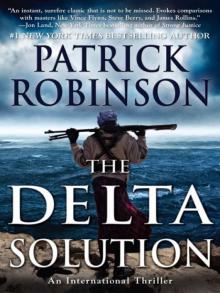 The Delta Solution
The Delta Solution U.S.S. Seawolf
U.S.S. Seawolf